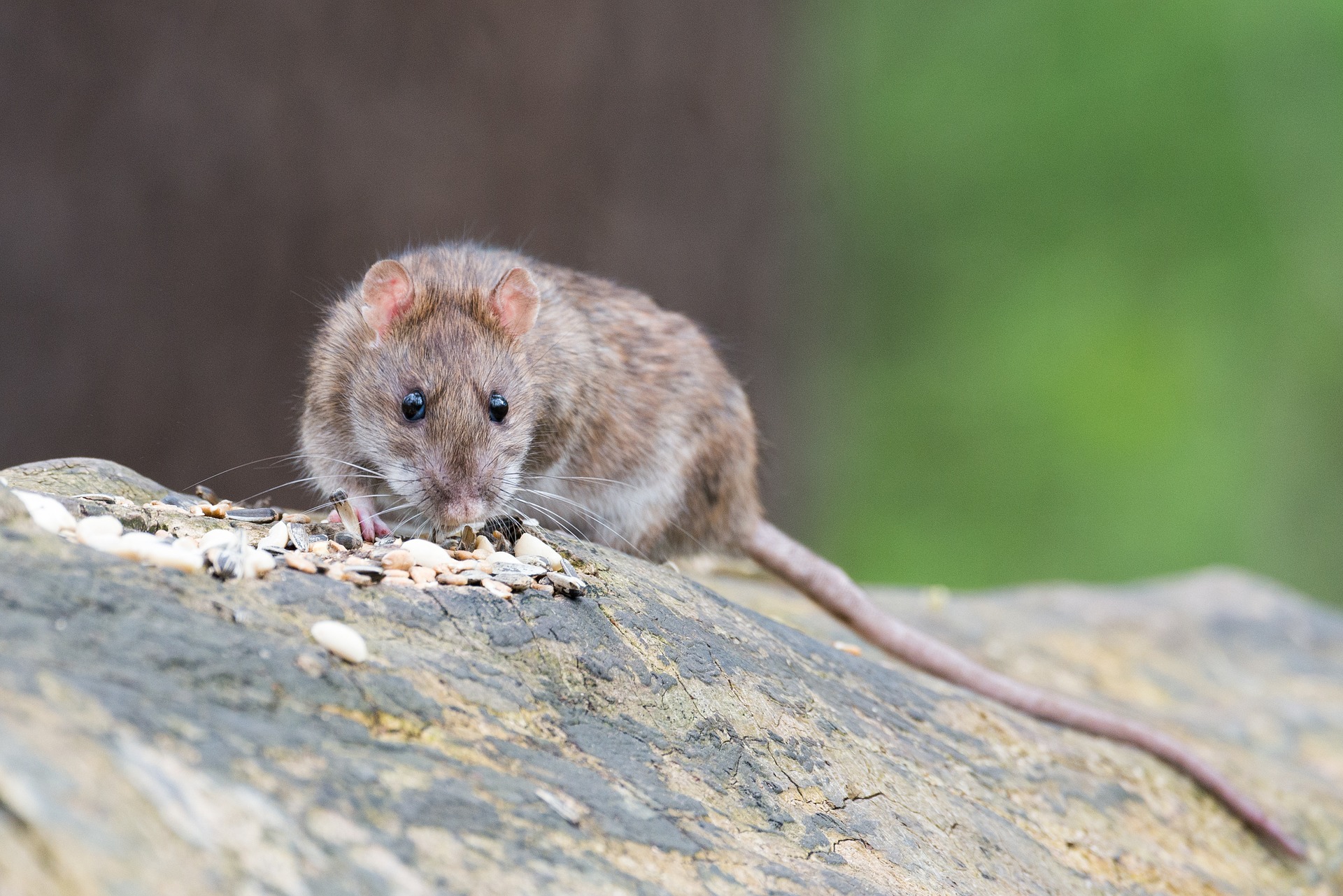
Call Now For Help With Rats
Rats
Roof Rats
The scientific name for roof rats is Rattus rattus. They usually nest on walls and attics of houses when they are in close proximity to humans. In the wild, roof rats are live in trees, on fences, in parks and industrial areas. They are also known as tree rats or citrus rats because they are fond of fruits. Roof rats have a slender body, larger ears, long tail, large eyes, and a more pointed nose than Norway rat. A roof rat weighs five to eight ounce and is twelve to eighteen inches long. Roof rats’ tails grow longer than their bodies and they use them to walk across electrical wires. They are expert climbers and are agiler than the Norway rats.
Norway Rats
The scientific name for Norway rats is Rattus norvegicus. They are also known as the wharf rat, sewer rat, common rat or brown rat. They have small eyes, shorter tail and a close set of ears. They are larger with a rounder body and live low, burrowing under foundations and basements, in floors, subways, and sewers, that’s why they are nicknamed sewer rats. Norway rats weigh between seven and eighteen ounces and are eleven to nineteen inches long. They have red or brown fur and a furless tail. The female tar gives birth to six to twelve babies, they carry their young from 21 to 23 days. The mother rat weans her young until they are three to four weeks old. They give birth four to six times a year. They are more common than roof rats. Norway rats prefer protein and carbohydrates foods such as bread, beans, sugar, and meat while the roof rats prefer wheat, fruits, seeds, corn, and vegetables. They have taste for human food. Although they are called Norway rats, they are not from Norway. They were first introduced into the United States of America in 1775 through European ships
Rat Diseases
Rats are known to cause numerous diseases including:
- Hantavirus Pulmonary Syndrome
- Hemorrhagic Fever with Renal Syndrome
- Lassa Fever
- Leptospirosis
- Lymphocytic Choriomeningitis (LCM)
- Omsk Hemorrhagic Fever
- Plague
- Rat-Bite Fever
- Salmonellosis
- South American Arenaviruses (Argentine hemorrhagic fever, Bolivian hemorrhagic fever, Sabiá-associated hemorrhagic fever, Venezuelan hemorrhagic fever)
- Tularemia
How Rats Enter Homes
Both roof rats and Norway rats leave their nests in search of food and water. They will feed on food thrown outside, garbage left outside and in dumpsters. These rodents are good in finding their way through tiny openings such a home’s roof. They are much attuned to any entry spaces on the roof such as damaged roofing. These rodents can also chew their way through the ceiling. To know if rats have invaded your house, be attentive for scratching noise in a wall cavity because rats love to gnaw, climb, crawl, fight and squeak thus causing a lot of noise, especially at night. They live in colonies of about 40 members thus these noises can’t go unnoticed.
How to Keep Rats Out Of Homes
Rats are drawn to houses that are in close proximity to trees or large shrubs. Vegetation offer hiding places and food for these rodents. To prevent invasion by rats you first have to clear close vegetation and situate woody planting 500 feet away from dwellings. Secondly, wrap metal sheeting around trunks of trees to prevent animals from climbing them. Thirdly, Screen over all vents, and inspect the building for gaps and holes to find entry points and seal them off permanently. Lastly, methods such as trapping and poisoning may be effective in eliminating the rats from our homes but can be hazardous to other household members’ especially young children thus these measures should be undertaken carefully. Other steps to keep the rats away may include Tighten your outdoor trash can, storing food in containers, keeping pet food secure in containers, feed pets from outside the house, wash dishes every night or after every meal, avoid stacking firewood, lumber by your home or outside. Covering openings into homes with mesh, including vents and holes and decluttering your living space.
